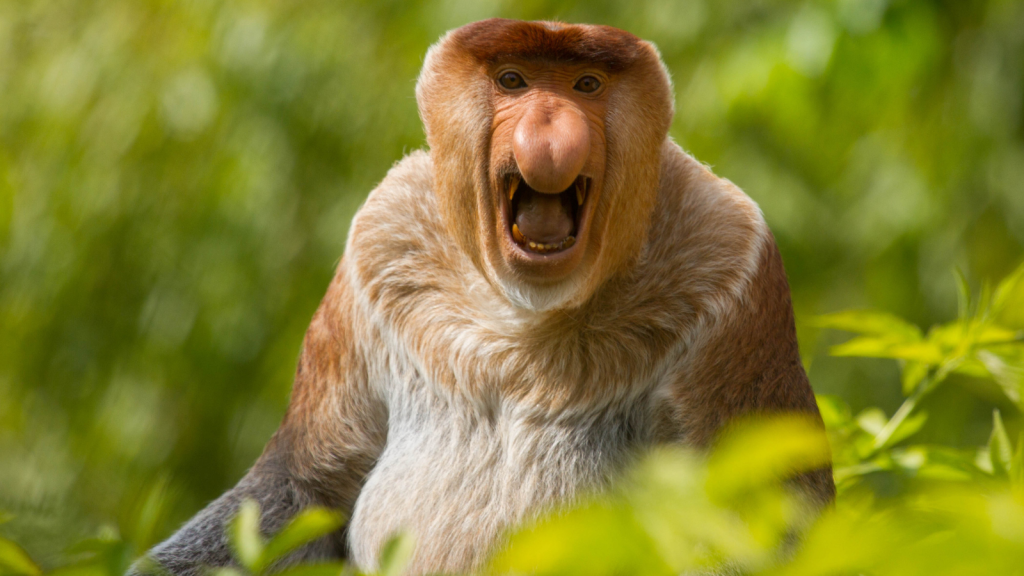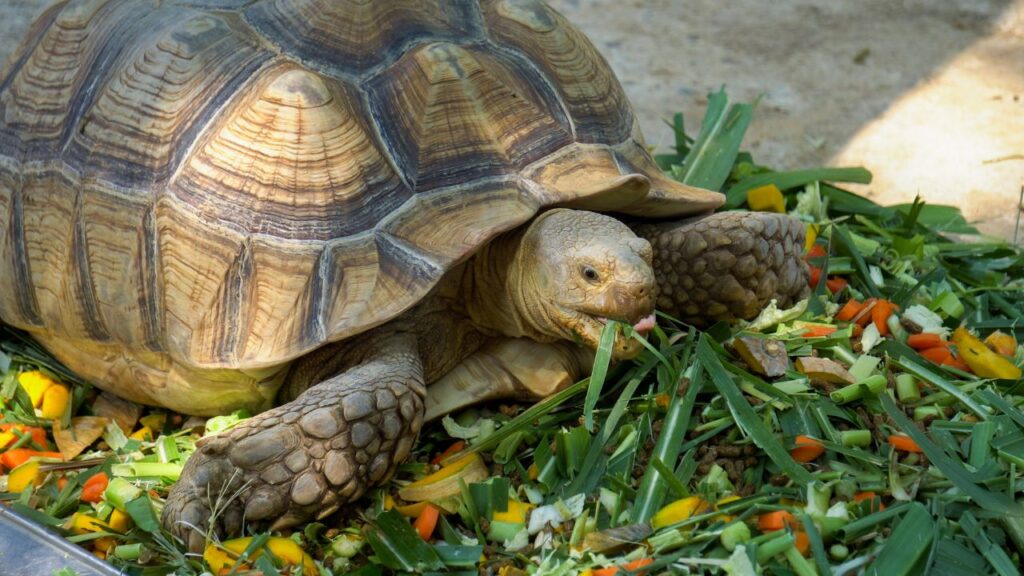The proboscis monkey, with its distinctive nose and pot belly, is a creature that never fails to capture our imagination. These peculiar primates, found only in the lush mangrove forests of Borneo, have a host of fascinating traits that set them apart from their simian cousins. From their unusual dietary habits to their impressive swimming abilities, proboscis monkeys are full of surprises. As we delve into the world of these charismatic creatures, prepare to be amazed by the quirks and qualities that make them truly one-of-a-kind.
Their Noses Are More Than Just for Show
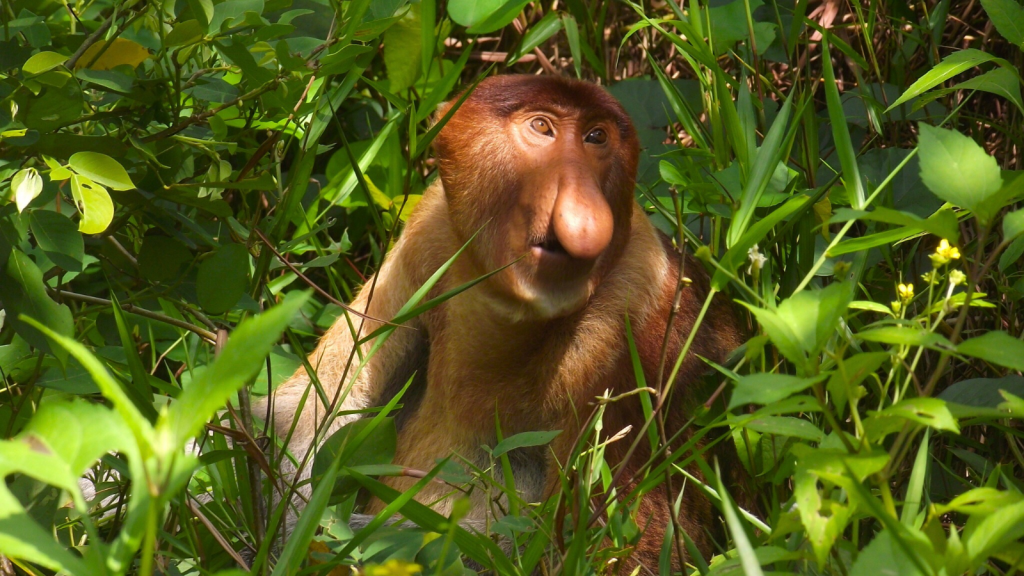
The proboscis monkey’s most striking feature, its large nose, serves multiple purposes. Male monkeys use their noses to attract mates, with larger noses being more appealing to females. These impressive schnozzes also act as sound amplifiers, making their calls louder and more intimidating to rivals. Interestingly, the nose of a male proboscis monkey can grow up to 10 centimetres long, often hanging below the mouth.
They’re Champion Swimmers
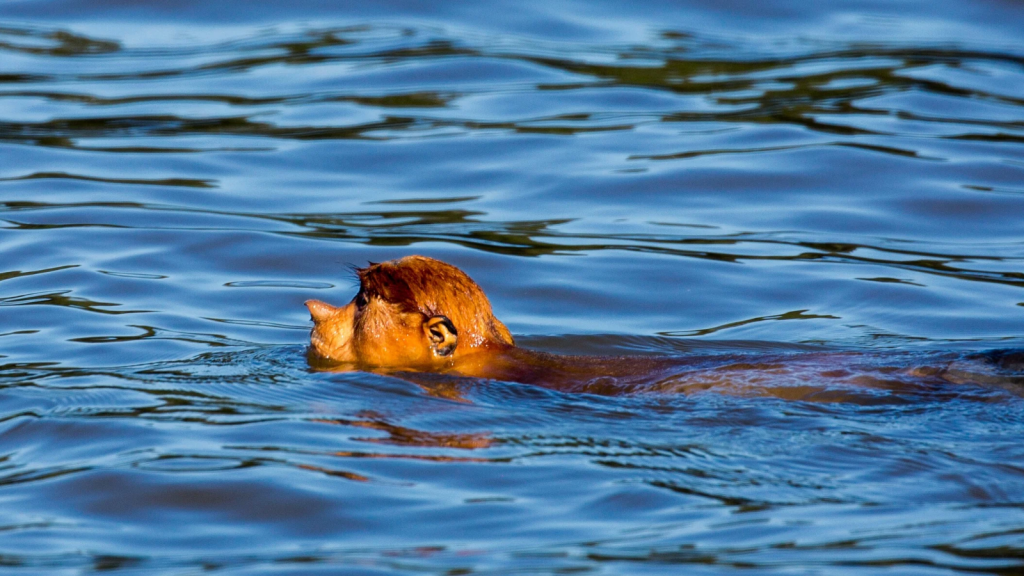
Unlike many primates, proboscis monkeys are excellent swimmers. They have partially webbed toes and fingers, which help them paddle through water with ease. These monkeys often cross rivers by swimming, and can even dive underwater to escape danger. Their swimming prowess allows them to access food sources and habitats that other primates can’t reach, giving them a unique ecological niche.
Their Stomachs Are Incredibly Complex
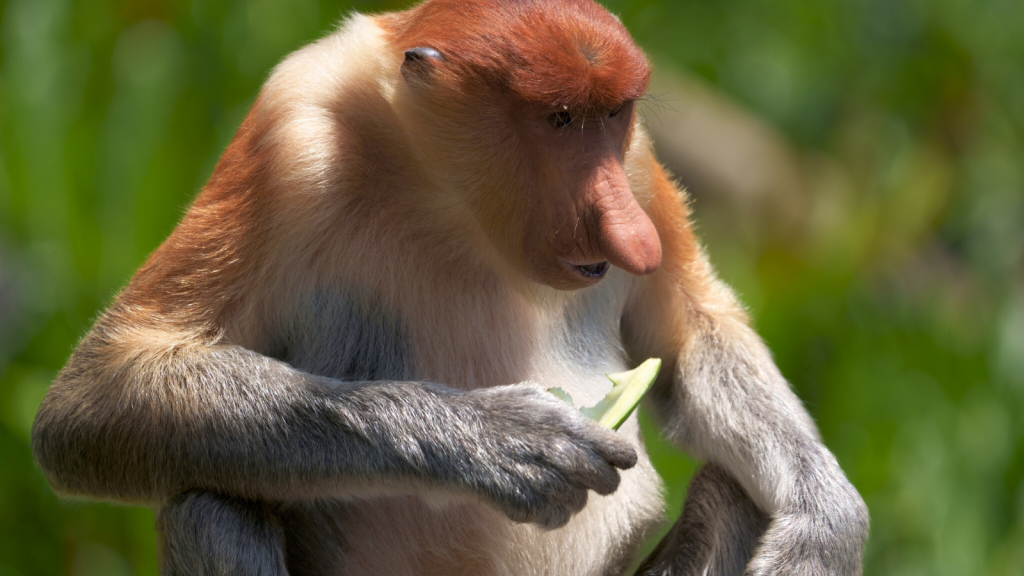
Proboscis monkeys have a unique digestive system featuring a multi-chambered stomach. This adaptation allows them to break down tough leaves and unripe fruits that other monkeys can’t digest. Their specialised gut also helps them extract more nutrients from their food. This efficient digestive system is crucial for their survival, as it allows them to thrive on a diet that would be insufficient for most other primates.
They’re Constantly Bloated
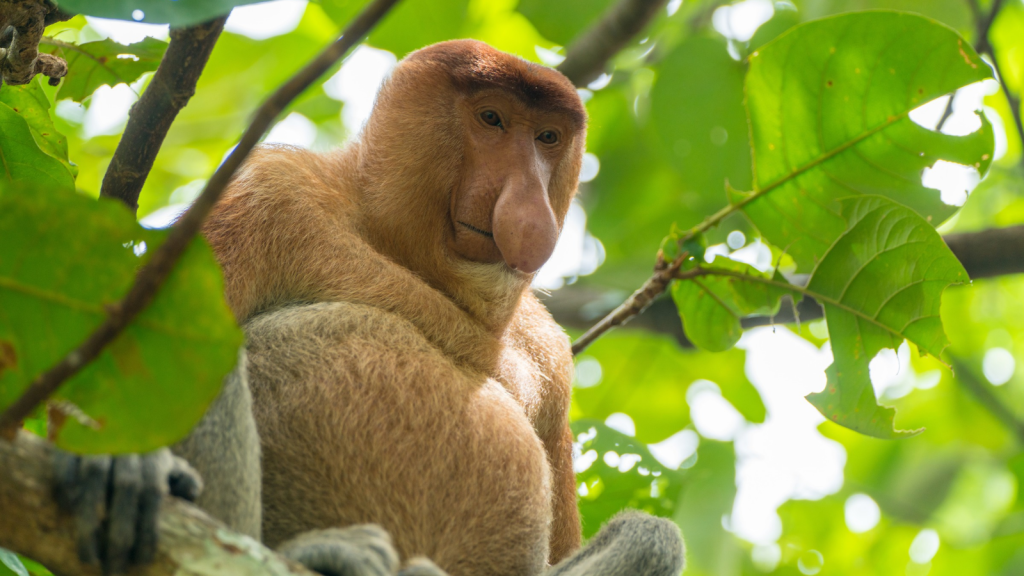
The proboscis monkey’s pot-bellied appearance isn’t just for show. Their complex stomachs are filled with gases produced by fermenting plant matter. This gives them a permanently bloated look, which is actually a sign of a healthy, well-functioning digestive system. The bloated belly also serves as a counterbalance when they leap between trees, helping them maintain stability in the air.
They Live in Harems
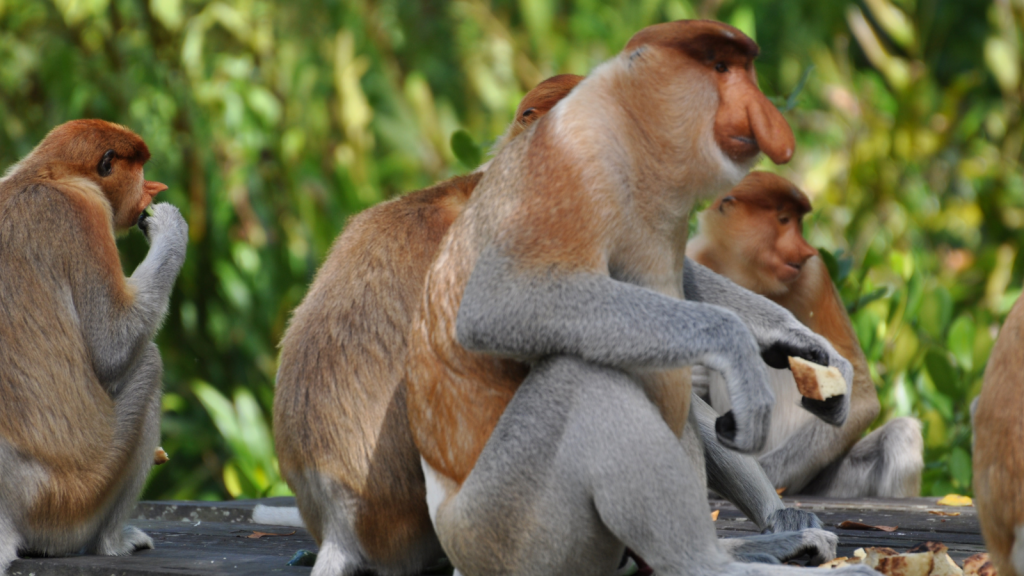
Proboscis monkeys have an interesting social structure. They live in harems consisting of one adult male, several females, and their offspring. These groups can contain up to 20 individuals, with the male fiercely protecting his family from rivals. Young males are forced to leave their natal groups upon reaching maturity, often forming all-male bachelor groups until they can establish their own harems.
Their Babies Are Born with Blue Faces
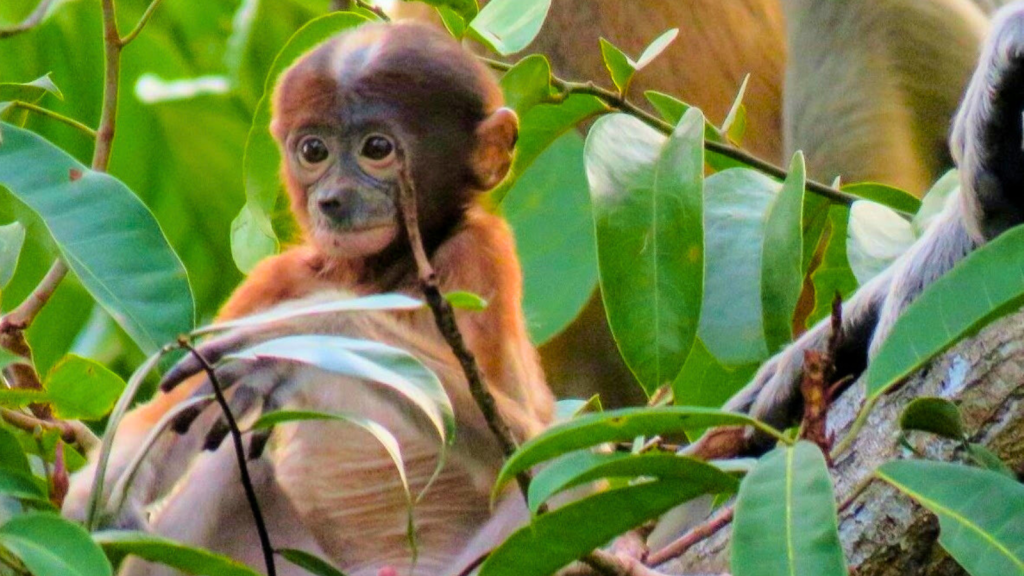
When proboscis monkey infants are born, they sport bright blue faces. This unusual colouration fades as they grow older, eventually turning to the typical pinkish-red of adult monkeys. Scientists believe this might help young monkeys attract more attention and care from adults in the group. The blue face also makes it easier for mothers to spot their infants in the dense forest canopy.
They’re Excellent Climbers Despite Their Size
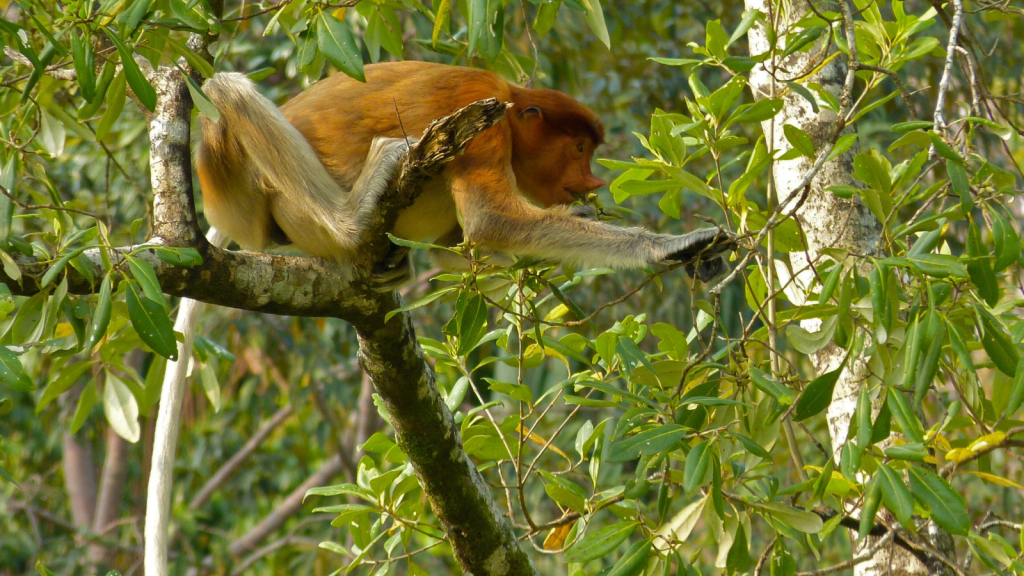
Despite their bulky appearance, proboscis monkeys are agile climbers. They use their long, strong arms and legs to navigate through the treetops with surprising grace. Their dexterity in the canopy helps them avoid predators and reach food sources. Proboscis monkeys can leap up to 5 metres between trees, an impressive feat considering their size and weight.
They Have a Unique Diet
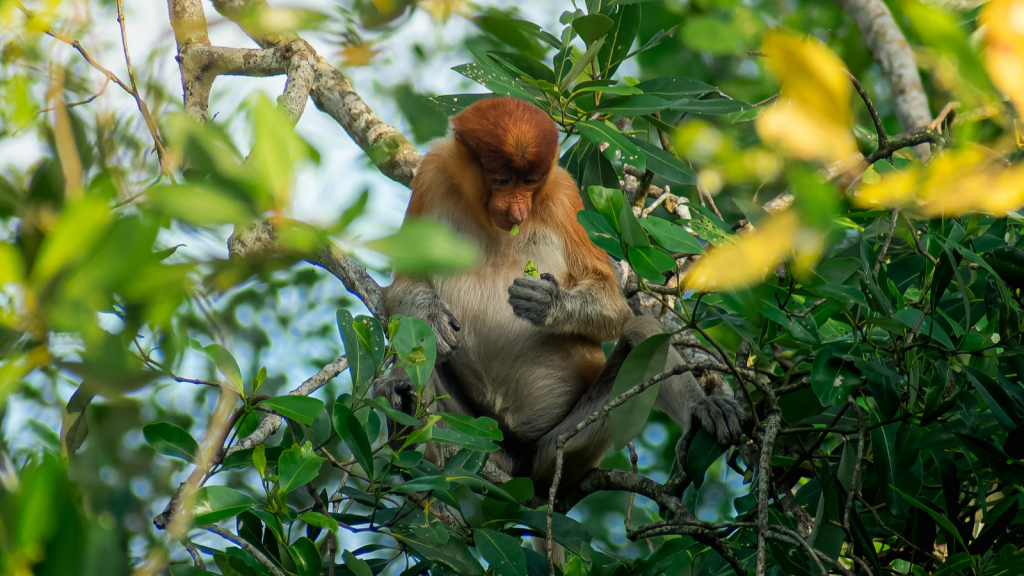
Proboscis monkeys primarily eat leaves, but they also enjoy fruits, seeds, and occasionally insects. Interestingly, they prefer unripe fruits to ripe ones, as their specialised stomachs can extract more nutrients from the tougher, unripe fruit. Their diet is also rich in mangrove leaves, which are toxic to many other animals but provide essential nutrients for these monkeys.
They’re Excellent Communicators
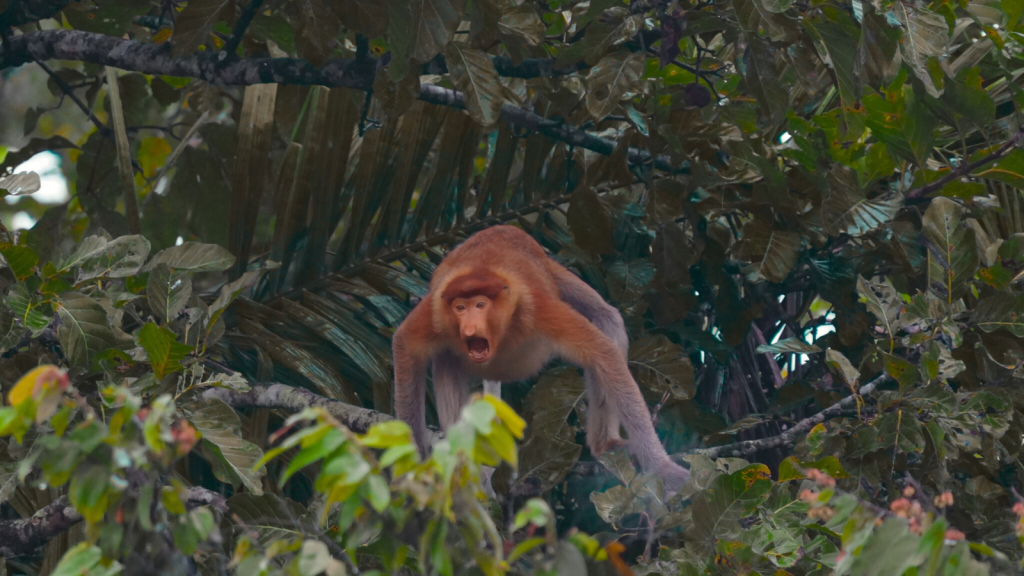
These monkeys have a wide range of vocalisations, including honks, roars, and squeals. They use these sounds to communicate within their groups, warn of danger, and assert dominance. Their large noses help amplify these calls, making them carry further through the forest. Proboscis monkeys also use facial expressions and body language to convey messages, with raised eyebrows often signalling aggression.
They’re Endangered
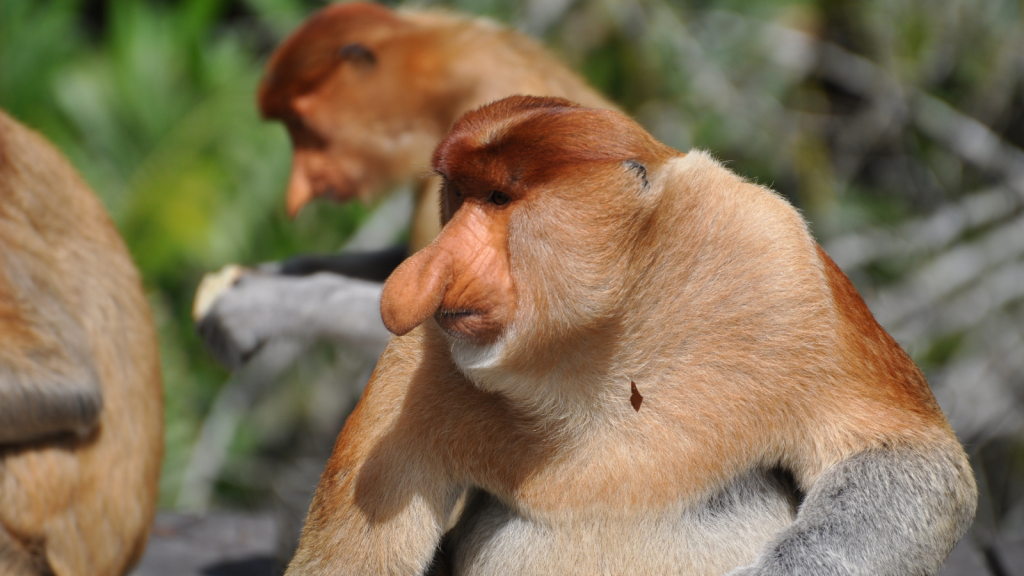
Sadly, proboscis monkeys are classified as endangered. Their population has declined by more than 50% in the last 40 years due to habitat loss, hunting, and human encroachment. Conservation efforts are underway to protect these unique primates and their mangrove forest homes. One major threat is the conversion of their habitat into palm oil plantations, which has led to significant loss of suitable living areas for these monkeys.
They’re Only Found in Borneo
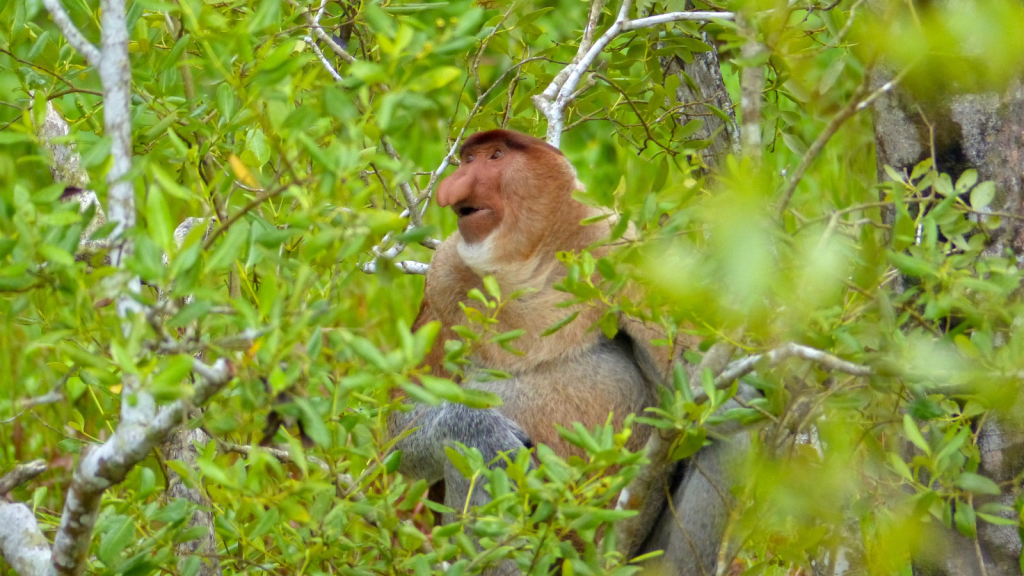
Proboscis monkeys are endemic to the island of Borneo, meaning they’re found nowhere else in the world. They primarily inhabit the coastal areas and riversides of the island, preferring mangrove forests and swamps. This limited range makes them particularly vulnerable to habitat loss and climate change, as they have nowhere else to go if their current habitats become uninhabitable.
They Have Unusual Sleeping Habits
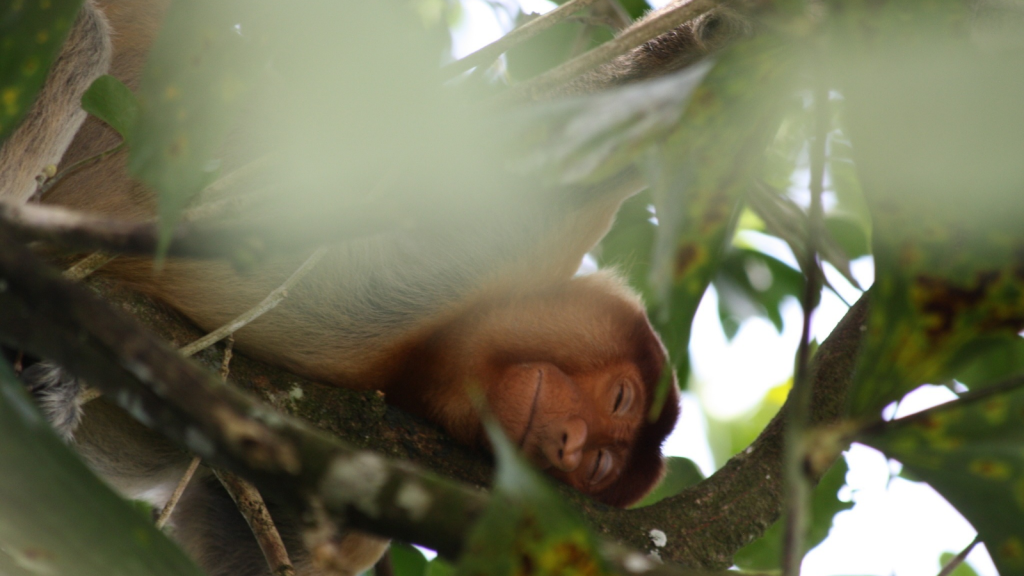
At night, proboscis monkeys gather in large groups near rivers to sleep. This behaviour, known as ‘sleeping trees’, provides safety in numbers and easy access to escape routes if predators approach. These sleeping sites are crucial for the monkeys’ survival. The monkeys often choose tall trees with sparse foliage for sleeping, allowing them to spot potential threats more easily.
They’re Known by Several Names
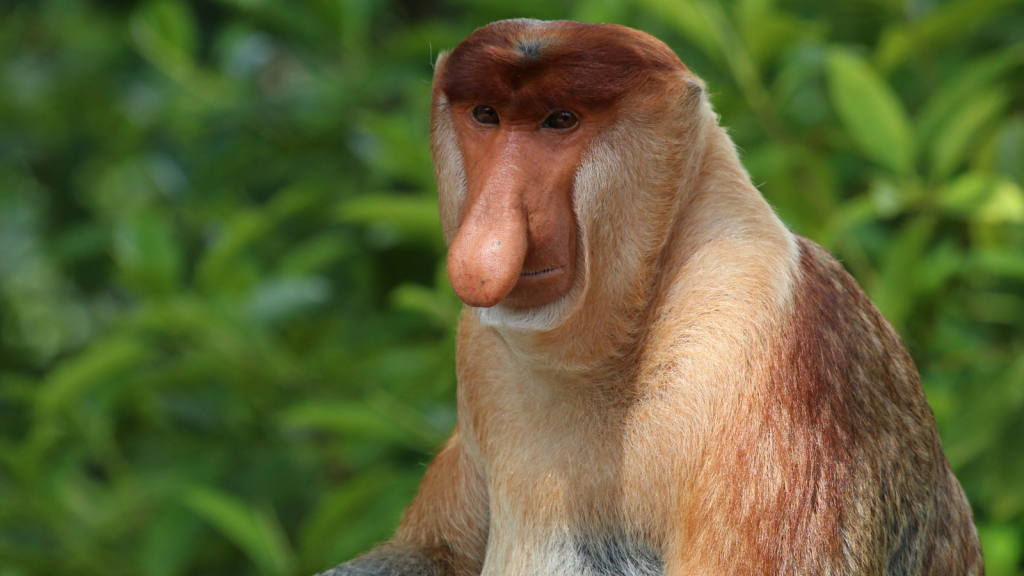
While we know them as proboscis monkeys, they have several other names. Locals call them ‘bekantan’, while their scientific name is Nasalis larvatus. They’re also sometimes referred to as ‘long-nosed monkeys’ or ‘Dutch monkeys’, the latter being a cheeky reference to the large noses of early Dutch colonisers. In Indonesia, they’re often called ‘monyet belanda’, which translates to ‘Dutch monkey’, further emphasising this humorous comparison.
Their Tails Are Longer Than Their Bodies
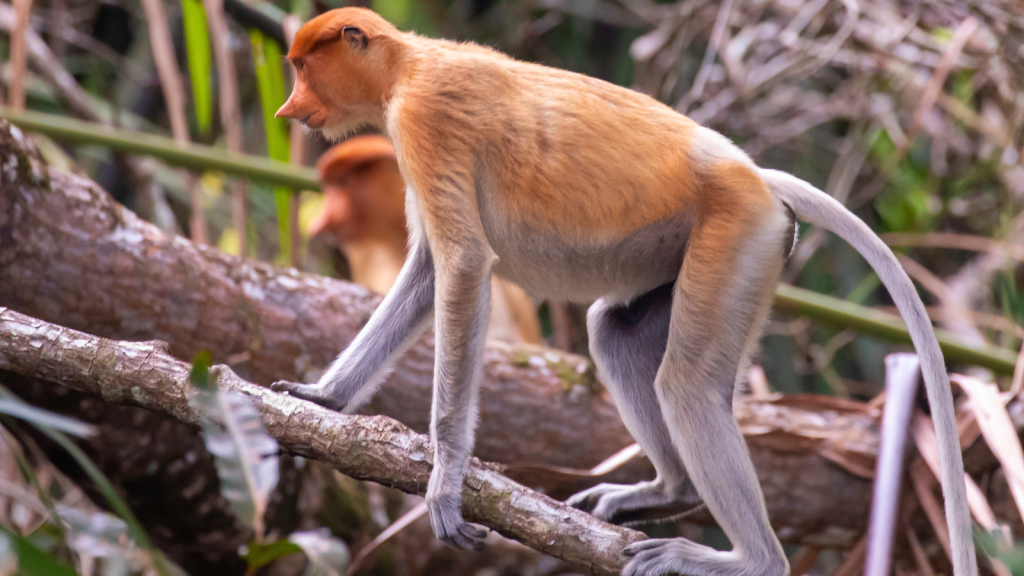
Proboscis monkeys have impressively long tails, often exceeding their body length. These tails, which can reach up to 75 cm in length, help the monkeys balance as they move through the trees and swim across rivers. The tail also serves as a rudder when swimming, allowing the monkey to change direction quickly in the water.
They’re Surprisingly Fast on Land
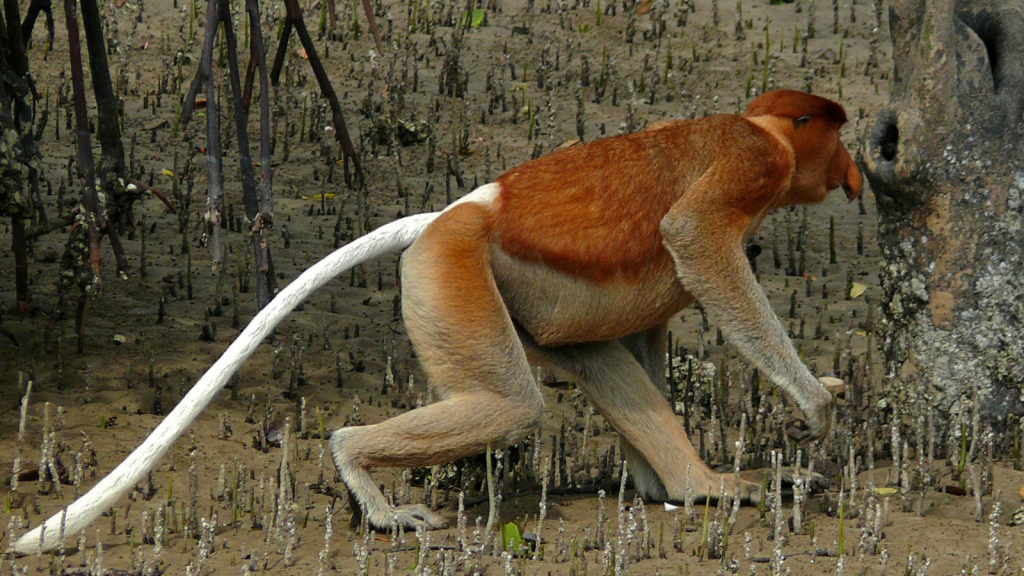
Despite their bulky appearance, proboscis monkeys can move quickly on the ground when needed. They can run at speeds of up to 15 mph in short bursts, helping them escape predators or catch up with their group. This speed, combined with their swimming ability, makes them remarkably adaptable to both arboreal and terrestrial environments.
Becky is a fervent wildlife enthusiast and pet care expert with a diploma in canine nutrition. Her love for animals stretches beyond the domestic, embracing the wild tapestry of global fauna. With over a decade of experience in animal welfare, Becky lends her expertise to OutlandishOwl through insightful articles, captivating wildlife information, and invaluable guidance on pet nutrition. Her work embodies a deep commitment to understanding the intricate lives of animals and a passion for educating others on sustaining natural habitats. Becky's hands-on conservation efforts and her knack for translating complex dietary science into practical pet feeding tips make her an indispensable voice for creatures great and small.

